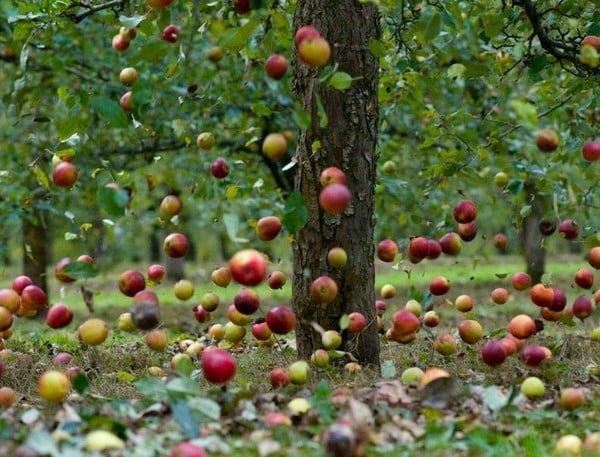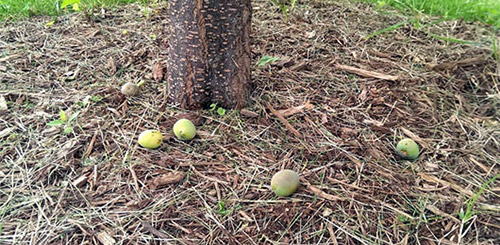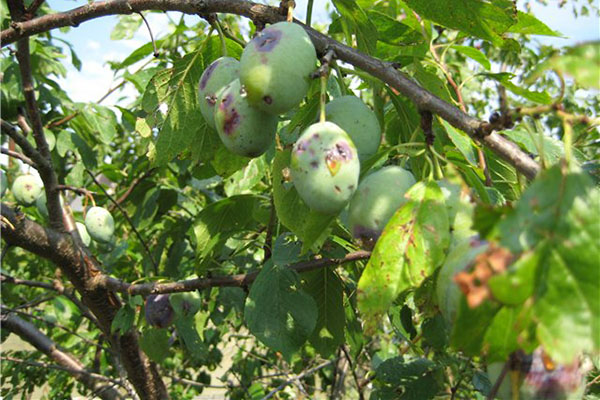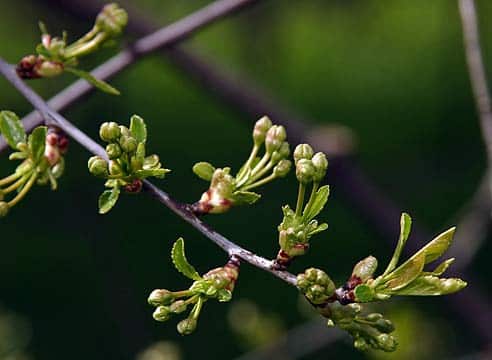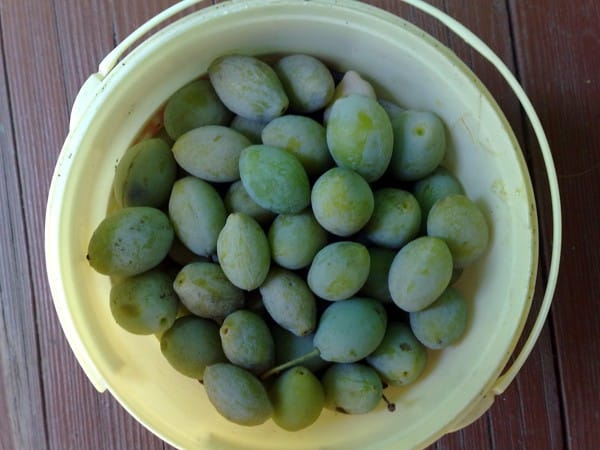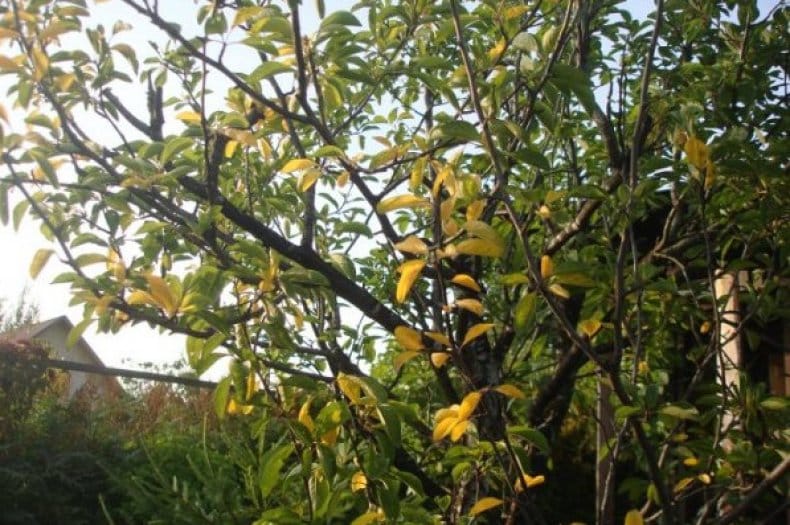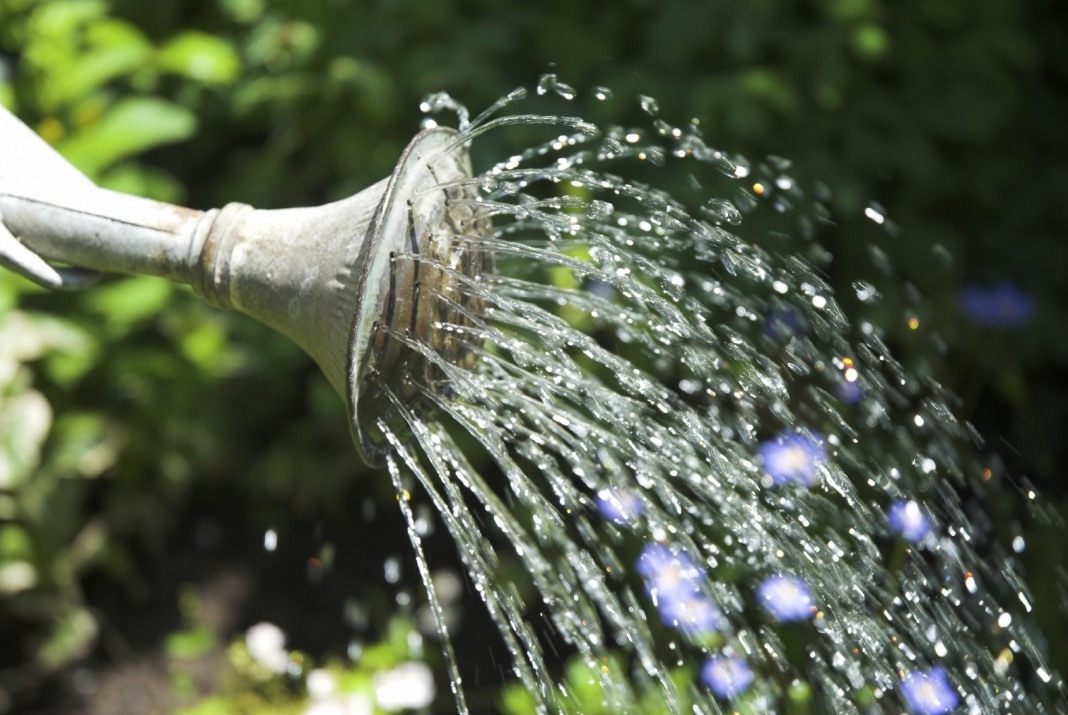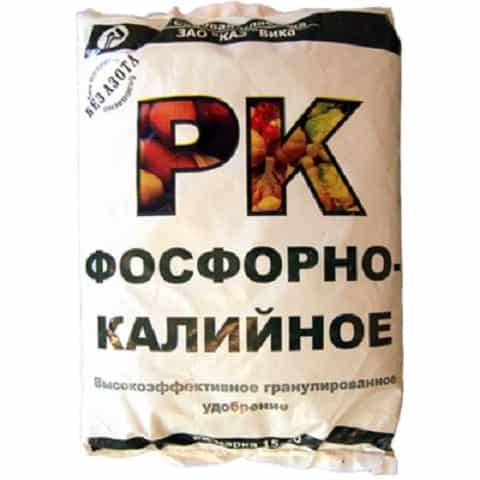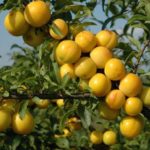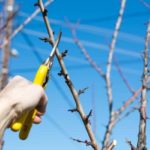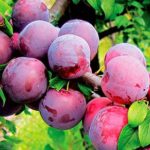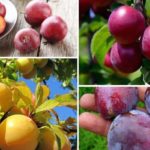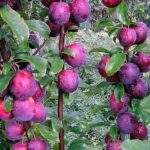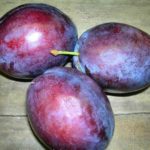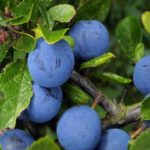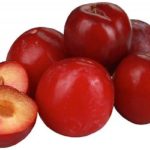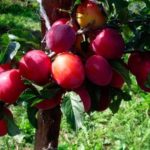Why plum fruits fall off often worries gardeners. Until recently, the tree pleased with the abundance of flowers and ovaries, but today they are all on the ground. The harvest is gone. But there might not have been a problem if the plum had been properly cared for. Knowing and taking into account the characteristics of the plant prevented the loss of the crop.
- Most common reasons
- If the plum is frozen
- Improper watering
- Abundance or deficiency of fertilizers
- Poor pollination
- Diseases and pests
- Which varieties are susceptible to this pathology?
- Nuances
- Plum sheds ovary
- Drops green fruits
- Ripe cream falls off
- What to do in such cases
- Proper care
- Features of watering plums
- Regulation of fertilizing
- Prevention of diseases and insects
- Increased pollination
Most common reasons
It is almost impossible to eliminate the problem that causes plums to fall off. But prevention is easier than ever.
If the plum is frozen
Sometimes a gardener plants non-zoned varieties on a plot with frost resistance above average winter temperatures. As a result, the tree freezes: fruit buds, bark and wood are damaged.
After such a winter, the plant weakens and sheds excess fruits, retaining only the necessary ones. This reduces yield. It happens that a plum is planted in a place blown by northern and northeastern winds. Then, during harsh winters, the plant will certainly freeze. In this case, it is recommended to replant the plant or (if this is not possible) install a protective screen.
Improper watering
The tree has a fibrous root system located in the upper layers of the soil. It cannot independently extract water from nearby horizons. Therefore, they are unable to hold onto the ripening fruits: shedding occurs.
Abundance or deficiency of fertilizers
The type and location of the plum root system allows it to receive nutrition only from the upper layers of the soil. If there is a lack of elements, fruits are dropped:
- A lack of nitrogen is manifested through the color of the leaves (they become pale). In this case, the green ovaries fall off. It is necessary to feed the plant with mullein infusion or urea.
- With a lack of potassium, green, but already slightly grown fruits fall off. It is recommended to fertilize with potassium fertilizer (salt).
- Lack of phosphorus leads to the shedding of large, but unripe fruits. The plant should be fed with double superphosphate.
But an excess of elements also leads to shedding of plums. In soil oversaturated with nitrogen and acidified, the harvest will be lost.
Poor pollination
Sometimes gardeners choose non-self-fertile plum varieties. These plants require pollinators. It is recommended to plant plum trees in the garden, the flowering of which coincides with this one.
To attract pollinating insects, it is necessary to plant honey plants. Hyssop, basil, mint, and clover serve their role.
Diseases and pests
Fruit shedding is caused by pests and diseases. Dangerous pests include:
- Sawfly. The butterfly lays eggs during the flowering stage of the plant. The first caterpillar eats the inside of the cream with the pit, emerges and pupates. Then the process is repeated. If protective measures are not taken, several generations of pests parasitize the plum tree over the course of a season.
- Plum moth. It acts in the same way as the sawfly. But it damages the ovaries and the pulp of the cream. The fruits do not ripen and fall off.
- Centipede. The butterfly lays eggs on trees that have just bloomed. The caterpillar eats the green seeds. The fruits fall off.
Disease of the tree with scab and fungal diseases weakens the tree, and it drops damaged fruits.
Which varieties are susceptible to this pathology?
Shedding is common to all old plum varieties. Plants that produce an abundance of root shoots also get rid of excess fruits. But breeders are creating new varieties and hybrids that are resistant to shedding. These are the ones that should be chosen for planting in the garden.
Nuances
To effectively help the tree and preserve the harvest, it is recommended to first determine the cause of fruit shedding.
Plum sheds ovary
Often, things simply don’t reach fruit ripening: the ovaries turn yellow and fall off. Cause: lack of nitrogen. Unscheduled fertilizing with organic fertilizer (mullein infusion or bird droppings solution) will help correct the situation.
It is recommended to pour a bucket under each mature tree.In the absence of manure, it is permissible to feed the plant with urea or fermented plant residues. But sometimes just green ovaries fly off the tree. In this case, the plant gets rid of the fruits that have overloaded it. This often happens with young plums.
Drops green fruits
Sometimes gardeners complain: the fruits fall before they have time to ripen. The ovaries have increased in size, but are falling off. It is recommended to select several fruits, carefully examine and break them. If unripe berries are affected by caterpillars or scab, then most of the crop is lost. The rest can be saved by spraying with insecticides and antifungals.
If healthy unripe fruits fall off prematurely, then the plant needs complex feeding. First, it is recommended to add liquid nitrogen, and after 4-5 days - phosphorus and potassium. No elements are added at the same time, with the exception of ready-made mineral complexes. To speed up the absorption of nutrients, fertilizing should be combined with watering.
Sometimes an unripe plum falls off due to a sudden change in weather: a prolonged cold spell or persistent heat. In this case, the fruits fall from young or weakened trees. This is how the plant tries to save itself from death.
Ripe cream falls off
Plums often fall off the tree in large quantities. The fruit turns blue and begins to ripen. But for some reason the tree drops its harvest. It is recommended to pick up one or two fruits and break them. If there is a worm or traces of its vital activity inside, then the fruit tree has been attacked by pests and it is losing its harvest. Unfortunately, it is unlikely that it will be possible to save the harvest. But it is recommended to take into account mistakes and carry out preventive treatments in the fall and spring.
If the plum is healthy and falls to the ground without ripening, then applying phosphorus-potassium fertilizers will help partially correct the situation. To increase the effectiveness of the event, it is recommended to combine fertilizing with watering. In July, the fruits stop growing and fall to the ground. They show traces of fungal diseases. In this case, it is recommended to spray with antifungal drugs.
What to do in such cases
To prevent fruit shedding, a set of measures should be carried out during the season:
- make scheduled fertilizing with organic and mineral fertilizers in spring and autumn;
- carry out preventive spraying against diseases and pests;
- observe the watering regime;
- promptly remove weeds from the tree trunk;
- select pollinating varieties;
- remove root shoots;
- rake and burn plant debris (leaves, twigs, carrion);
- plant zoned varieties and hybrids.
To prevent plum trees from dropping green or ripening fruits, you should regularly monitor the condition of the trees. If a pathology is detected, protective measures must be taken immediately.
Proper care
To obtain a stable harvest, it is recommended to follow all rules for caring for trees.
Features of watering plums
To preserve the harvest, it is recommended to water the plant 4-5 times per season:
- after leaving a state of rest;
- after flowering;
- 2-3 weeks after the second watering;
- while pouring berries.
Under an adult tree, you need to pour 20-30 liters of water (the soil should be moist to a depth of 50 cm).
Regulation of fertilizing
Gardeners should know how to feed plums. Sequence of fertilizing:
- after the tree comes out of dormancy, add a solution of mullein or chicken droppings (norm: 1 bucket for an adult plant);
- after flowering, add potassium-phosphorus fertilizer (at the rate specified by the manufacturer);
- After harvesting, the loss of minerals in the soil must be replenished: it is recommended to apply phosphorus-potassium fertilizers.
Dry fertilizers are scattered throughout the tree trunk and embedded in the soil.
Prevention of diseases and insects
To prevent diseases it is recommended:
- avoid dense plantings;
- carry out regular sanitary and formative pruning;
- remove weeds;
- apply fertilizing in a timely manner;
- remove anthills;
- treat the garden with antifungal drugs.
To combat insects, it is recommended to attract their enemies: ladybugs, antlions.
To prevent pest damage, it is recommended to carry out preventive spraying with insecticides:
- the first after the tree awakens;
- the second at the budding stage (pink bud);
- third after the formation of the ovaries;
- subsequent ones as needed.
Pest and disease control is carried out throughout the year.
Increased pollination
Often it is not the ovaries that fall off, but the barren flowers. To avoid such troubles, it is recommended:
- plant pollinating plants (for 2-3 varietal plums, 1 tree with flowering at the same time for pollination);
- avoid dense plantings;
- plant honey plants to attract pollinating insects.
Simple measures will help you get healthy fruits and preserve the harvest.

